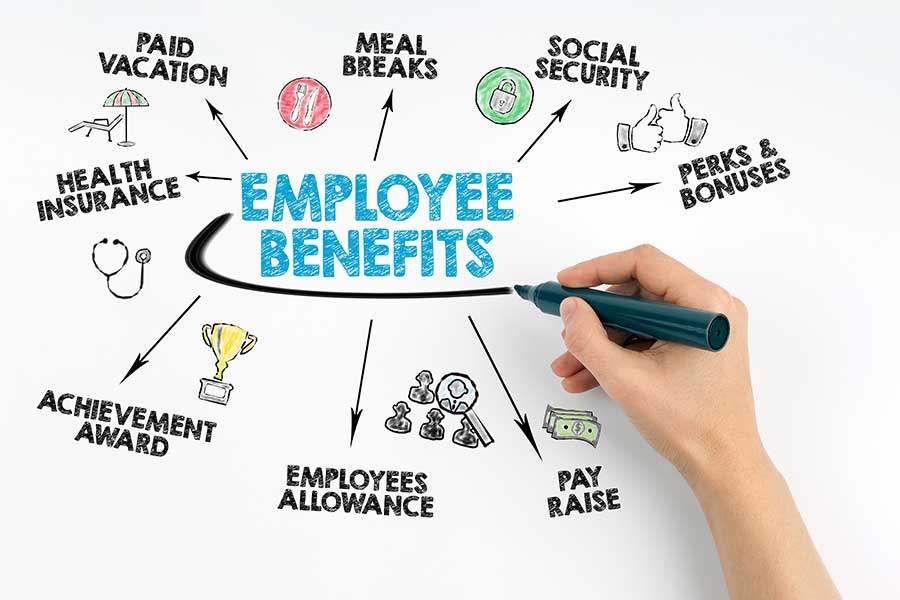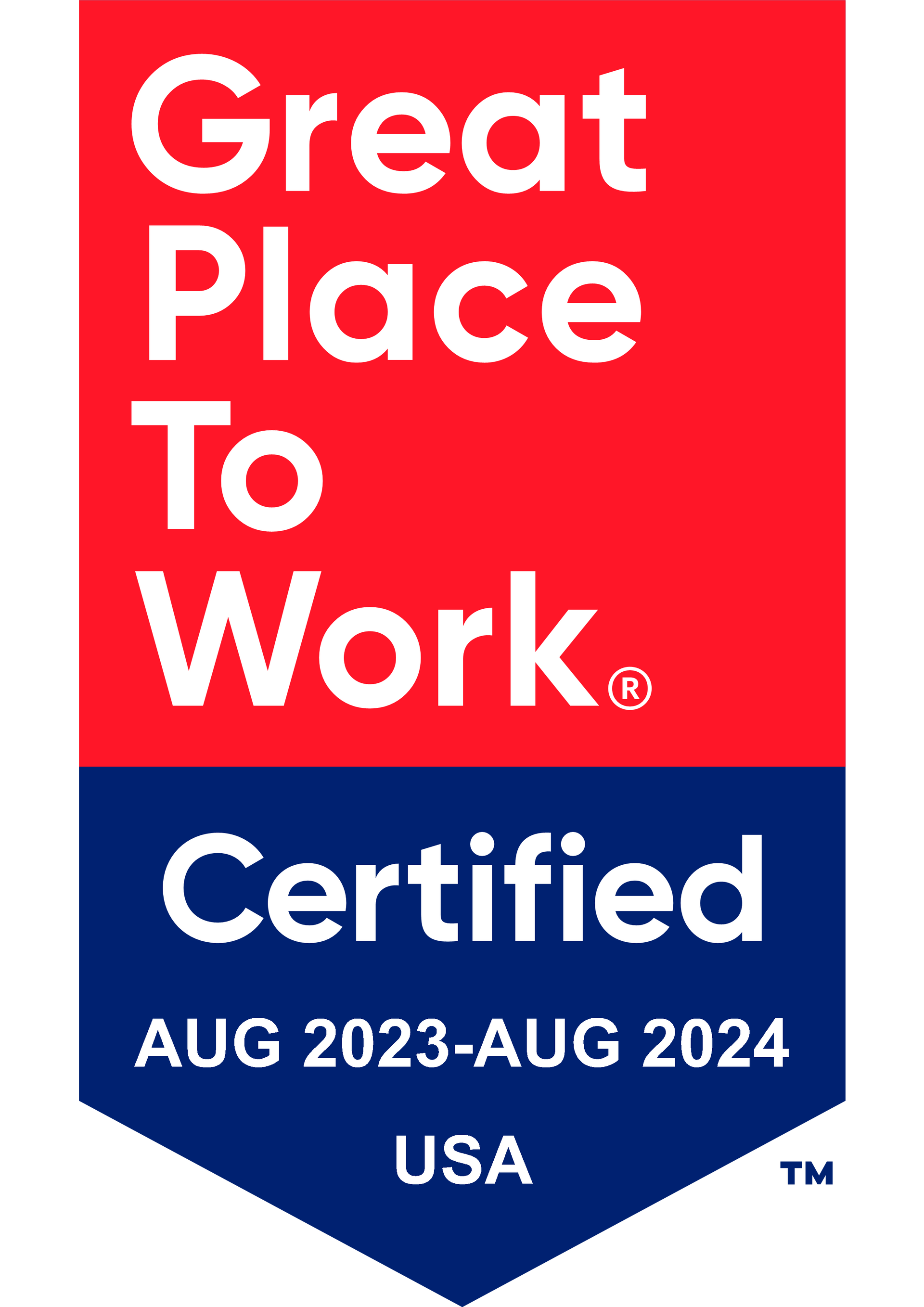Get in touch
408-366-8880
mymail@mailservice.com

10 Steps to Designing Employee Benefits Plans
Regardless of your company’s size, creating a benefits strategy is essential to meeting the needs of your employees and your organization’s budget. Benefits programs are often one of the most substantial costs that employers face. From a monetary perspective, benefits account for approximately 40% of the total compensation package offered to employees.
Allowing your employees to select the personal benefits available to them will hopefully improve retention rates. But they can also cost you due to turnover from employees who leave for a better benefits package. In an SHRM job satisfaction and engagement survey , close to one-third of the respondents shared that they would likely look elsewhere for a job in the next 12 months due to their current employer’s benefits package. To avoid the latter scenario and to create a benefits plan to meet your organization’s budget, consider the following steps as a guide.
10 STEPS TO DESIGNING A BENEFITS PLAN
1. DETERMINE YOUR GOALS
One of the first steps in designing a benefits program is deciding what are the goals for the program. Your goals, or objectives, will then help you determine the types of benefits that are best for your organization. Some questions to consider when determining your objectives might include:
- How will the benefits program be tied to the employee value proposition?
- How are we attempting to support the health and well-being of our employees?
- Are we looking for ways to reduce the current medical plan claims from our current plan offerings?
- Are there gaps that we need to fill?
By asking similar questions, an organization can begin to make a list of goals for the benefits program. Examples of objectives might include:
- Fostering the well-being of employees by offering easy access to mental health benefits
- Implementing and sustaining a competitive benefits package to meet the employee need to mitigate financial risk due to loss of health or loss of life
- Providing a sense of financial security and well-being for employees
2. DETERMINE YOUR BUDGET
In order to determine your benefits program objectives, you must also determine your budget. Cost is an important factor when selecting benefits options. With the continual increase in medical benefits, employers need to find creative ways to offer some level of health insurance to their employees. For employers who currently have a plan in place, it’s essential to determine current costs and projected costs. From there, determine what the following year’s budget will look like. Employers who do not currently have a benefits plan in place will need to come up with a baseline budget and then work with a benefits specialist or broker to determine what options are feasible.
3. ASK EMPLOYEES FOR INPUT
The last thing employers want is designing employee benefits programs that will only be left unused or unappreciated by employees. It’s vital that employers get their employees’ input on what’s important to them in a benefits package. If your organization currently has a plan in place, then a survey that outlines the current benefits offerings and asks employees for their input on the benefits could be useful. What would they like to see added? What could be improved? Did they utilize the benefits they selected?
If your organization doesn’t currently have a plan in place, your questions might focus more on what employees would like to see included and what’s most important to them. Questionnaires and personal interviews are both ways by which employers can gather valuable employee input and data. By taking this input to heart and demonstrating to employees that it was utilized to develop the benefits plan, you can boost employee satisfaction and morale.
4. CONDUCT ADDITIONAL NEED ASSESSMENTS
As an employer, you want your benefits plan to meet the needs of your organization and employees. Focusing on the benefits plan objectives in addition to the input from employees is a good way to meet that goal. An organization can also request stats from vendors to determine employee usage of current benefit plans. Based on the results, adjustments can be made for future plans. Additional research can be pulled from market data available based on industry and competitor trends.
It’s also helpful for organizations to consider the demographics of their workforce. Different generations might rank the significance of certain benefits differently. Older generations might rank medical insurance as a priority over paid time off, for example, while younger generations might rank paid time off higher.
5. CONSIDER LEGAL REQUIREMENTS
Tax laws and regulations, as well as legal requirements to offer certain benefits, need to be considered when designing a benefits plan. Some employers are required to provide certain benefits under state, local, or federal laws. Standard required benefits include Social Security, unemployment insurance, and worker’s compensation benefits. Employers with 50 or more employees, for example, are required to offer affordable health care to employees under the Affordable Care Act. Employers who do not comply with these requirements are subject to financial penalties.
Several state and local laws require employers to offer paid sick leave. Disability insurance is required in Hawaii, New York, Rhode Island, California, New Jersey, and Puerto Rico. Employers need to stay abreast of the legal landscape of their local and state jurisdictions, as well as new and amended federal laws that can impact employer benefits plans.
6. DESIGN THE BENEFITS PLAN
Now that goals and objectives have been set, a budget has been defined, and a needs assessment has been conducted by utilizing the previous steps, it’s time to design the plan. By assessing the data collected, you can begin to formulate the types of benefits your organization would like to offer in order of priority. Once the list has been developed, the cost can be determined. The cost can then be analyzed against the benefits budget.
This step may take time, as it may require several re-dos and additional assessments. Additional questions should be asked to ensure that the benefits platform will meet the organization’s goals and needs. Employers should ask themselves the following questions about their current plans:
- Are there benefits that are not frequently utilized that could be removed?
- How much, if anything, will employees need to contribute?
- What will the administrative cost be for the benefits moving forward?
- Who will administer the benefits?
- Will a broker be required for all or some of the benefits?
- Are there opportunities for cost savings?
The answers to these types of questions will help employers determine what can be changed, removed, or added to the current or new benefits offerings.
Typical benefits offered to employees include medical insurance, life insurance, retirement plan benefits, disability insurance, tuition reimbursement, paid time off, vision insurance, and dental insurance. Additional company benefits — often referred to as employee benefits perks — can sometimes be relatively low-cost to employers. These might include pet insurance, wellness programs, mental health programs, gym membership reimbursement, cell phone reimbursement, training programs, and childcare services.
7. DEVELOP A COMMUNICATION STRATEGY
Once the employer benefits offerings have been decided, it’s essential to develop an employee communication strategy around the roll-out. For employees to buy into the offered benefits program, they must understand what’s included.
Unfortunately, many employees remain ignorant of their benefits. In a study conducted by Harris Pole on behalf of the disability insurance provider Unum, 48% of the employees who were offered short- or long-term disability insurance reported that no one explained how the benefit worked, and 66% said that employers need to do a better job at educating them about those types of benefits. When done well, benefits education has a positive impact on job satisfaction.
Benefits tie into an employer’s employee value proposition (EVO). They impact employee morale, recruiting, and retention rates for an organization. Even if you offer the most competitive benefits package available, if your employees don’t understand it, the EVO is unaffected.
Make sure that your employees are aware that you considered their input while developing the benefits plan. If employees know that they influenced the selection of the benefits being offered, they won’t feel that you wasted their time or attempted to stroke their egos. Their input mattered.
Aside from legal communication requirements, such as providing a summary plan description, some points to consider when developing employee communications include:
- Are there any changes to the benefits offered?
- Are there any new benefits added?
- Have any benefits been removed?
- Are premiums changing?
- How much have medical costs increased for employers?
- How can you better educate employees to utilize their benefits?
- Are there discount programs outside of the benefits you offer that could save the employee money (e.g., the $4 generic drug program that many pharmacies participate in)?
Keep adding to your list of questions that employees might have with the new roll-out of benefits, or during open enrollment, and create communications around them. Developing a Q&A is often helpful. You want the benefits communications to not only create awareness but also to foster a higher degree of understanding about the benefits and how to utilize them wisely.
8. HELP EMPLOYEES SELECT THE BEST OPTIONS
Though benefits are tied to the EVO and have an impact on job satisfaction, many employees don’t understand how the benefits being offered to them work. Personalized insurance selection is one of the most important decisions employees will make. Still, some employees invest very little time in making benefits decisions: An Aflac survey showed that more than 40% of employees take 15 minutes or less to enroll in benefits and waste between $700 and $800 per year due to mistakes made when selecting benefits.
When employees make poor decisions about their benefit plan options and utilization, both the employee and employer lose money. If employers want to maximize the value of their benefits plans for employees while also reducing costs, they must offer a benefits education platform to support the process.
Employees should do the following:
- Attend all benefits meetings
- Encourage spouses to attend benefits meetings
- Understand the plan choice options in detail and to use their individual or family’s past and projected medical expenses to determine the best plan choice to meet their potential needs and costs
- Understand the differences between an FSA (Flexible Spending Account), HSA (Health Savings Account), and HRA (Health Reimbursement Account), as well as the plans they accompany, if offered by the organization
- Ask questions and seek one-on-one support with a benefits specialist if provided by the company
Some employees feel insecure when asking questions about benefits. Giving employees the option to speak privately with a benefits specialist can support employees who fall under these categories.
9. PROVIDE YEAR-ROUND EDUCATION
Many employers offer benefits education at open enrollment — and that’s it. To add value and to keep employees engaged in making wise benefits choices, communications should be ongoing. Hanging or placing benefits information and offerings throughout your offices in conspicuous places is one way to do this. Periodic text and email campaigns are also an option.
The content shared with employees could contain the basics of the benefit being displayed. You might also choose to get creative. Consider educating employees by providing them with tips on how to utilize their benefits wisely, creating fun competitions to promote a benefit offering (such as a step-a-thon to promote your wellness program), and offering interactive events, such as lunch and learns. If you fall short on ideas of what to share, consider asking your vendors for guidance and for marketing collateral they offer. Many vendors also provide email campaigns of which you might be able to take advantage.
10. EMPLOY PERIODIC ASSESSMENTS
Once a benefits plan is implemented, periodic assessments of the program need to be conducted. Assessments help employers gauge the effectiveness of their benefits program. They can determine whether or not the goals of the plan are being met and whether or not employee needs are being met. Assessments also gauge the competitiveness of a benefits plan, helping employers understand if they are keeping up with economic trends. They also help ensure that regulatory requirements are being met.
Conducting surveys with internal employees, reviewing external survey results, pulling external benchmarking data, and consulting with advisors on external trends are all viable options to employ periodic benefit plan assessments. When implementing a benefits plan, it can be helpful to schedule quarterly assessments.
DESIGNING EMPLOYEE BENEFITS WITH KBI BENEFITS
Offering benefits that meet the needs of employees is vital for retention and job satisfaction. This needs to be balanced with meeting the company’s goals and budget. By developing a thought-out strategy, you will be one step closer to offering an adequate and competitive benefits program that supports your organization as a whole.
As you can see, there are a lot of steps for which to plan, consider, and implement to design a benefits plan for your organization. With a well-informed broker like KBI Benefits by your side, you’re not alone.
We're here to help you implement the best benefits program for your employees. We can support the facilitation of all of the above items and walk you through the entire process step-by-step.
Services
Latest Thinking




